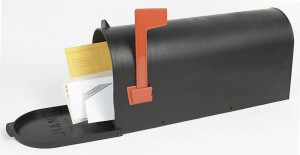 Don’t take your major donors out of the direct mail stream. This is one of the worst things you can do for your organization. Typically this happens for one of two reasons. You’re in a board meeting or prospect management meeting and someone says, “major donors hate getting direct mail. We shouldn’t solicit major donors by mail ever again.” Seems logical enough, right? After all, major donors are special, aren’t they?
Don’t take your major donors out of the direct mail stream. This is one of the worst things you can do for your organization. Typically this happens for one of two reasons. You’re in a board meeting or prospect management meeting and someone says, “major donors hate getting direct mail. We shouldn’t solicit major donors by mail ever again.” Seems logical enough, right? After all, major donors are special, aren’t they?
The other scenario is that gift officers often will say they’re afraid that if a major donor gets a direct mail piece, she’ll give a small gift via mail then turn down a larger personal solicitation the gift officer plans to make in the future.
Both of these claims are based on personal biases and assumptions. Not in fact or data analysis.
The reality is, your major donors (many of whom were likely acquired through direct mail in the first place) will give both through the mail and in response to a personal solicitation. Major donors aren’t some hybrid alien-human beings. There is no data to suggest that the mere existence of wealth creates a disdain for direct mail. This is a myth, and a bad one.
If you take your major donors out of your mail stream, you risk losing millions of dollars in annual revenue.
As to the second concern, it is at least more believable. However, there is no better reason to call on a major donor than to thank her for a recent gift. So consider it a blessing if your major donor sends you $100 in the mail. You’ve got the perfect reason to call and have a conversation with her again! And there’s no pressure because you’re just calling to say thank you.
In my book, getting a direct mail gift from a major donor presents a huge opportunity to reinforce the donor’s commitment to your organization and strengthen the relationship. And it gives you the chance to ask for a follow up meeting to discuss the donor’s ongoing support and how she can become even more involved in the great work you’re doing.
Surely much better to segment your mailing and then send them a targeted email so that you acknowledge that they are a major donor and like to be treated as such but you give them a similar message. This also gives you the same opportunity to perhaps ask them for a slightly larger gift than you might ask the general run of donors,
Hi Christopher,
You’re absolutely right. Major donors should remain in the mail stream but should receive unique packages, offers and custom asks based on their gift history and your relationships (i.e., where you are in the cultivation/solicitation process).
It’s easy to customize your mass-audience direct mail to target the high-end donor group. Based your target on 12-mo. cumulative giving (vs. last gift/largest gift). Use “generous” language, remove 2 out of 3 repetitions (assuming you’re saying everything 3+ times for your mass-audience), remove ~1/2 of the highlights/boldface/italics/underlines in laser copy, be sure you have a personal salutation (no “dear friend” letters), use a closed-face outer envelope with toned-down teaser or graphics, ALWAYS first-class postage, and I believe NEVER an direct ask amount (or array). With major donors, it’s hard to project what they may be able to give… an open ask is always the safe and best bet.
Hi Bill,
Thanks for sharing. I tend to agree with about 95% of your insights. There are certain instances where I’d advocate using an actual ask array (though this would the exception, not the rule), and I’d recommend only using cumulative annual giving in your segmentation if there is at least one large gift in the year. Otherwise, you run the risk of suppressing a major donor who may have just taken a year off.
Have you tested the cumulative vs. last/largest and found that it consistently improves performance?
Andrew
Great blog, as always.
I would add that direct mail is not just a way to send an appeal, it’s a key way to communicate with your donors. If they don’t get your letters, they have no idea what you’re doing. Too many groups take major donors out of direct mail, perhaps intending to send a special letter but failing to do so. What’s worse, a lot of multi-year pledgemakers end up getting only an annual pledge reminder that looks like an invoice! I just blogged about this at http://www.werth-it.com/blog/.
Thanks for sharing your insight and wisdom, much appreciated.
Katherine,
Thank you.
You’re spot on, by the way. I was shocked when I read your post talking about the “invoices” you received. Then I thought back to my time in pediatric healthcare and recalled what our process was with multi-year pledge donors…yup, I’m sad to admit, but we did exactly what you’re talking about. A bland reminder letter on agency letterhead, with references to the “Amount Due” and “Due Date”.